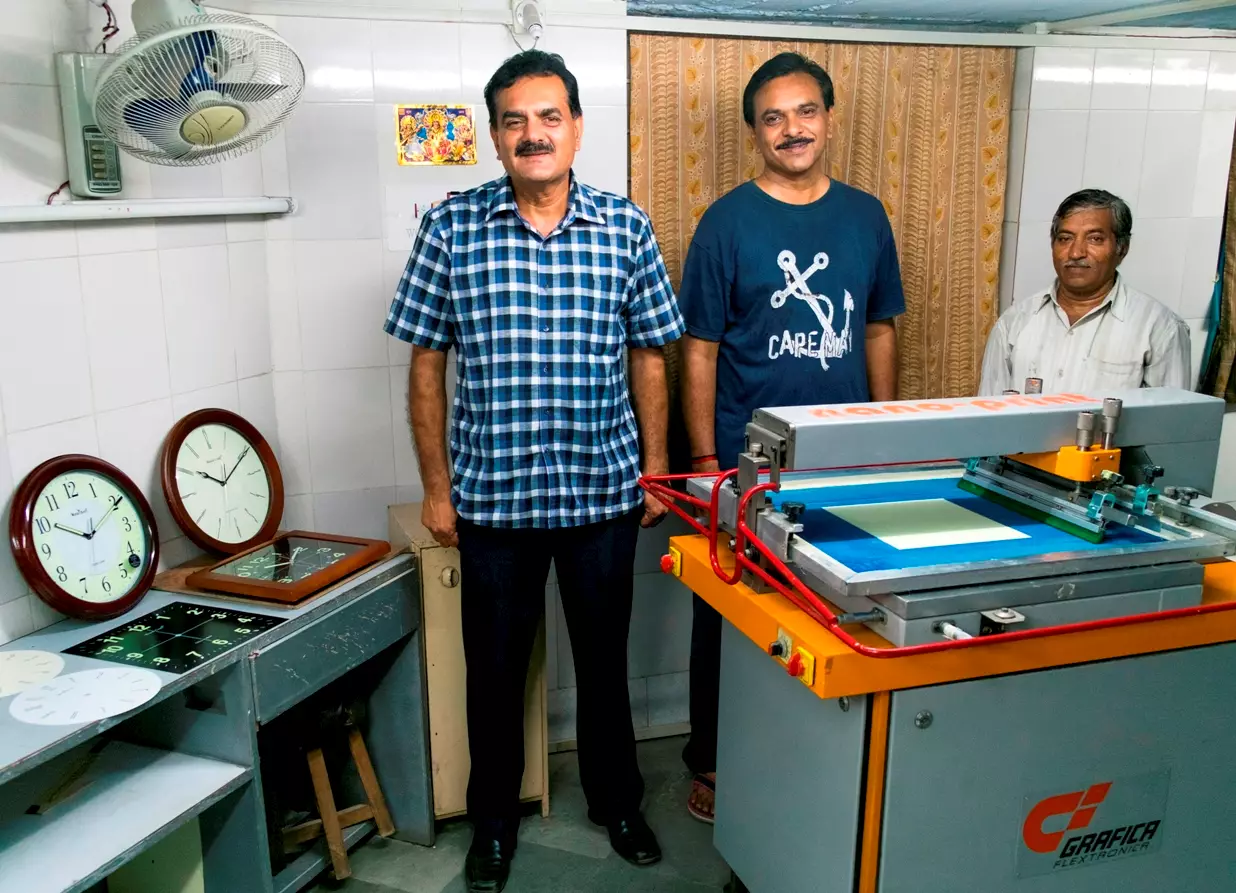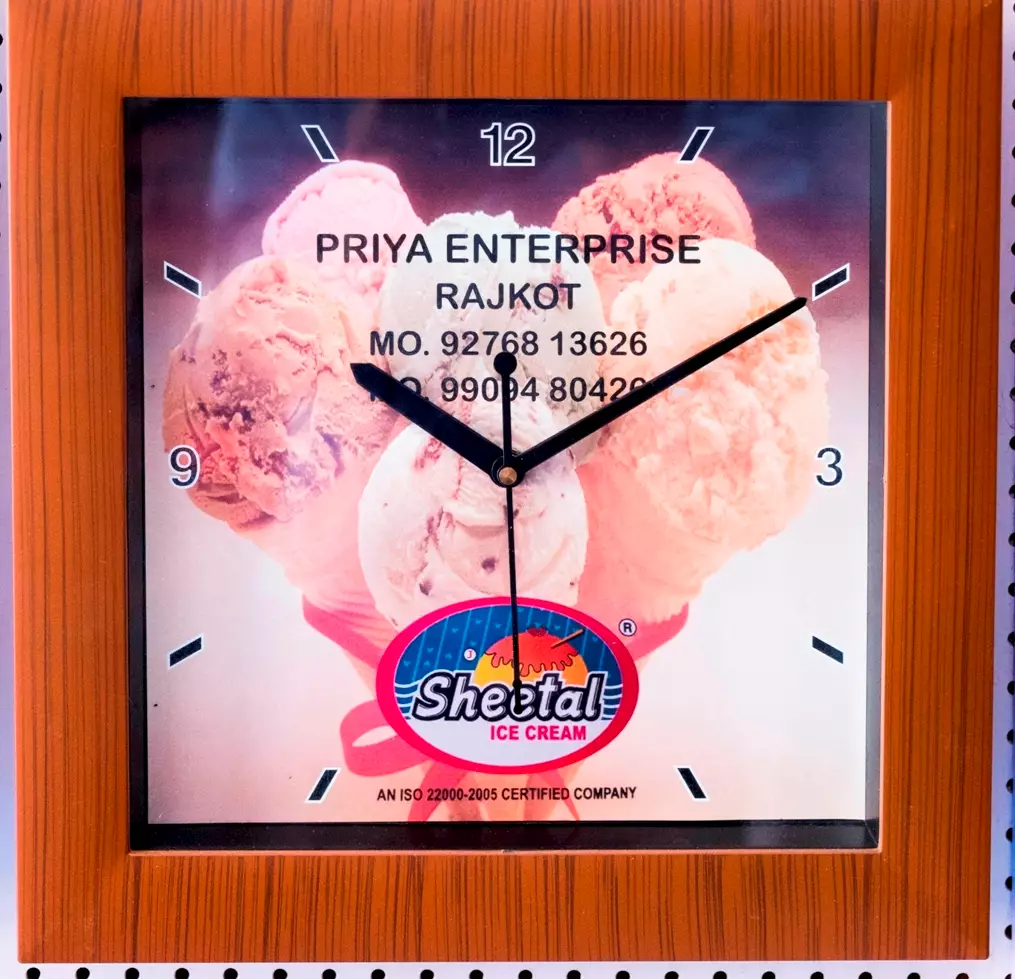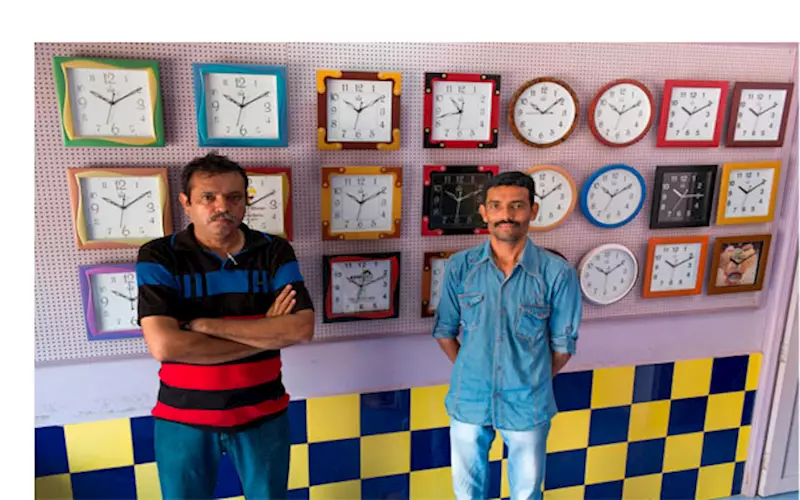Screen print in Morbi - In Search of Lost Time
Shripad Bhatt of Dhirubhai Mistry Institute for Print Education Technology, Research and Training, a division and industry initiative of Grafica Flextronica in Vasai explores how 80% clock dials are screen printed in Morbi. And how the clock producers in the industrial township find a golden opportunity in the creation of clock dial printing.
02 Dec 2016 | By PrintWeek India
Morbi, north of Ahmedabad in Gujarat, is considered to be a hub for wall clock production in India. The facts are: 100 companies (much more, till a decade ago). Most of these companies manufacture clock dials with in-house printing while some clock manufacturers outsource screen or offset printed clock dials (either created on PVC or paper) to these firms.
Question: What is common about most of the wall clocks from Morbi?
Answer: A screen printed dial with a UV special effect.
In this age with ubiquitous gadgets which display real ‘Time’, Indian wall clock manufacturers are trying to sustain demand for wall clocks. The only option available is to make innovative wall clocks for the new age consumer.
And the manufacturers in Morbi know this. Which is why they know to be relevant and compete with the digital clocks, they will have to outsource clock dials that combines design and print (screen and offset). And so, there is a lot of behind-the-scene hustle bustle in the clock industry, as clock dial makers place a greater onus on creating attractive dials to fit the ‘stunning’ body of a clock.
The crux of this transformation story is screen printing! So, let's talk about the role of screen printing process in the clock industry.
Role of screen printing in Morbi
Describing the role of screen printing, Chetan Bhatti of Golden Dial, Morbi, says: "Without a dial there cannot be a clock and without screen printing there cannot be a dial on the clocks. However, these days, offset printed paper dials with spot UV are deployed by clock manufacturers. But it’s only 20%, and the rest of the 80% are dials which are screen printed on non-paper substrates such as metal (aluminum and tin-sheet), PVC, etc."
The thumb rule is simple: Offset printed dials are used for simple, fancy clocks. These fancy clocks are rare gifts and not for watching time.
According to Chetan Bhatti: "Screen printing and clock dials go hand in hand. As of now, screen printing is the best method to print clock dials. With the advent of quartz technology, clock making has become easy, yet the printing of dials is very critical."
Corroborating Chetan’s views, Hitesh Sejpal of Rajkot-based Wood Craft Clocks says that the screen printing technology has multiple applications in a clock dial. "Screen printing is the backbone of the clock industry. In the clock industry, screen printed dials are most preferred. With the screen printing process, we can print on rigid substrates such as PVC and metal with vibrant and long lasting impression."

Manual screen print, a waste of time
With the passage of time, automation has reaped rich dividends. "Considering the amount of ‘time’ wasted in manual screen printing, automation is a profitable option for the printing of dials. With automation we have improved quality and doubled production. We are able to print dials with multiple up which was not possible when we had manual screen printing," says Chetan Bhatti.
"During a visit to my friend’s printing press in Rajkot, I was impressed with the kind of fine print and details that could be obtained on a screen printing machine. That is when I decided to go for automation. Earlier, we used to struggle to print quality clock dials. Now we can see a vast quality difference between the manual and machine printed clock dials," Bhatti adds.
According to Hitesh Sejpal it is easy to print big size dials on a screen printing machine. "This is because these big dials are required for tower and public display clocks."
Sejpal adds, if a dial is the face of a beautiful clock, ‘perfection’ is the essence of the dial printing. "The imprint has to be 100% accurate in sync with the hour, minute, second movement. If the clock shows incorrect time, then what is the use of a beautiful or a costly clock? Also, colours should not be a dominant factor in the overall look and feel of the wall clock. We print black and white dials, that is, white print (1-12 numbers) on black background and black print on white background."
Chetan Bhatti agrees: "Printing accuracy is the most important factor in dial making. It has to be perfect. We cannot print incorrect dials on the clock. There can be no errors, misprint or unclear impression of print. We need to print accurate gap between the lines and digits in alignment with the movement, failing which the dials will be rejected by the customers."
Time has to be perfect.
Celebrating time
The wall clock manufacturers of Morbi have not heard of the seven novels by the French novelist, Marcel Proust called In Remembrance of Lost Time (rated by PrintWeek India as one of the finest work of fiction ever written in any language) but the novel could guide us about how the clock making is central to our understanding of time, reality and innovations.
Proust wrote the novels between 1909 and his death in 1922 at the age of 51, and the interesting thing to note is, the wall clock has remained a regular fixture in our lives since then. With lots and lots of image change over.
The time-makers of Morbi
Golden Dial
For 27 years Golden Dial has been supplying clock dials to numerous clock manufacturers in Morbi. They supply metal dials, paper, plastic, aluminum embossed dials, plastic embossed dials, picture dials (kids, birds, flowers, etc). These dials are screen printed in black and white. They also supply offset printed dials with spot UV.

Golden Dial also manufactures plastic wall quartz clocks under the brand name Silk quartz in different sizes and shapes for household and promotional use with a price ranging from Rs 150/- to 300/-. They also create customised clocks for corporates who require to print with their own design, logo, company name etc. The company also makes clock rings which are required for fixing dials and glass cover. An design team for clock design, dial design is in-house. Their set-up is spread over 7000 sq/ft. The recent expansion reflects the growing demand for wall clocks.











 See All
See All